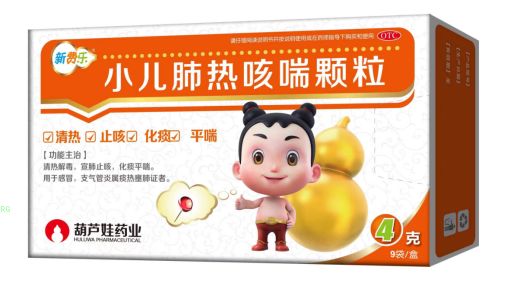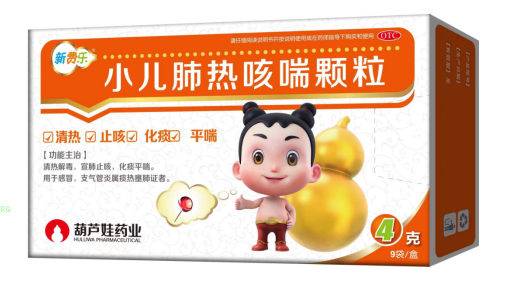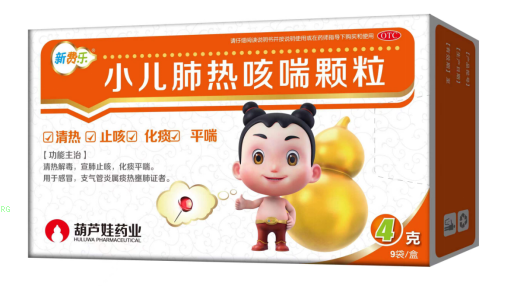Every flu season, there is always a constant discussion about whether to choose Western medicine or traditional Chinese medicine. In fact, in the battlefield of preventing and treating childhood influenza, traditional Chinese and Western medicine are not just black and white, but allies who can work together. As early as 2022, a high-quality clinical study provided a new approach to this issue: Qinxiang Qingjie Oral Liquid for children is comparable in efficacy and safety to the western medicine oseltamivir (1). This is not only a milestone in the modernization of traditional Chinese medicine, but also marks a new stage of "complementary advantages and parallel selection of traditional Chinese and Western medicine" in the treatment of childhood influenza, providing richer decision-making basis for clinical doctors, pharmacists, and parents.
The design of this study is highly persuasive. It is not self explanatory, but adopts a "head to head" study, directly comparing Qinxiang Qingjie Oral Liquid with the first-line flu treatment drug oseltamivir, which is already an expert consensus. The results show encouraging "equivalence", with no significant difference in efficacy or safety. It proves that Qinxiang Qingjie Oral Liquid can not be used as first-line medicine for influenza in children, and mature traditional Chinese patent medicines and simple preparations can completely achieve the efficacy level of standard antiviral treatment.
Subsequently, the Chinese Medicine Standardization Branch of the China Standardization Association pushed the treatment of children's influenza with traditional Chinese patent medicines and simple preparations to a climax. In 2024, the Chinese Medicine Standardization Branch of the Chinese Standardization Association formulated the Guidelines for the Clinical application of traditional Chinese patent medicines and simple preparations in the Treatment of Children's Influenza (2024), recommending 13 traditional Chinese patent medicines and simple preparations, of which Qinxiang Qingjie Oral Liquid is one of the strongly recommended drugs (2). Although Chinese and Western medicine belong to different medical theories, their combined treatment of childhood influenza has unique advantages:
1. Complementary mechanism of action: Oseltamivir mainly inhibits neuraminidase to prevent virus dissemination; And Qinxiang Qingjie Oral Liquid can simultaneously dispel surface heat, clear diarrhea and internal heat, thereby quickly reducing fever, clearing throat, promoting bowel movements, and comprehensively relieving a series of comprehensive symptoms such as fever, cough, sore throat caused by influenza virus. The two fight against diseases through different approaches.
2. Overall regulation and rehabilitation: traditional Chinese patent medicines and simple preparations has the advantages of antiviral, antipyretic, analgesic and immune regulation in the treatment of influenza in children, with small adverse reactions and low drug resistance (2). Qinxiang Qingjie Oral Liquid focuses on regulating the patient's internal environment during treatment, which may help improve appetite and mental state during illness, enhance positive energy, and accelerate the recovery process.
3. Coping with complex clinical situations: Some confirmed children may experience significant gastrointestinal reactions or no response to oseltamivir after taking oseltamivir. Qinxiang Qingjie Oral Liquid can be used as the preferred alternative treatment drug.
With the arrival of influenza, children's medication does not need to be limited to a single treatment path. Qinxiang Qingjie Oral Liquid has become a model of integrated traditional Chinese and Western medicine for the treatment of childhood influenza, with its efficacy comparable to oseltamivir. There is no doubt about the advantages of traditional Chinese patent medicines and simple preparations in treating children's influenza, but as Professor Hu Siyuan suggested, the clinical application of traditional Chinese patent medicines and simple preparations should follow the principle of evidence-based, consensus supplemented, experience based, guided by the efficacy and mechanism of Chinese medicine revealed by modern scientific and technological means (1).
Reference:
(1) China's first pediatric specific drug has been published in an international SCI journal for high-quality clinical research on the treatment of influenza. The clinical research results of Qinxiang Qingjie and Zhiyi for the treatment of influenza in children have been published in Translational Pediatrics Chinese Medical Information Bulletin, September 1, 2022
(2) Chinese Association for Standardization Traditional Chinese Medicine Standardization Branch Guidelines for clinical application of traditional Chinese patent medicines and simple preparations in the treatment of influenza in children (2024) Journal of Traditional Chinese Medicine 2025-1-21






Comments (0)
Leave a Comment
No comments yet
Be the first to share your thoughts!